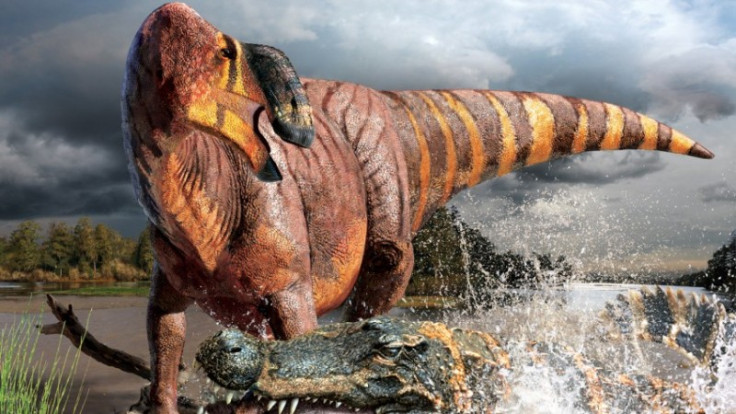Large herbivorous dinosaurs ate crustaceans as a side dish
The unusual behaviour may have been linked to sexual activity.

Some large herbivorous dinosaurs which roamed what is now the United States around 75 million years ago were also eating crustaceans on the side, a new study has found.
Researchers from the University of Colorado Boulder discovered evidence for this unusual behaviour in fossilized faeces samples – known as coprolites – found in Utah by another team from the Denver Museum of Nature & Science.
"From what we know about dinosaurs, this was a totally unexpected behaviour," said Karen Chin, from Boulder. "It was such a surprising discovery we wondered what the motivation could have been."
Chin thinks the coprolites likely belonged to a kind of duck-billed dinosaur called hadrosaurs, which were largely herbivorous.
When the team looked at the coprolites, they consistently found thick pieces of fossilized shell, an indication that the dinosaurs had consumed crustaceans, probably while eating decaying wood.
There is evidence to suggest that hadrosaurs ate rotting wood for the nutritious fungi and decomposing material that it provided. The crustaceans would have supplied them with an additional health benefit.
In a paper published in the journal Scientific Reports, Chin and her team argue that the consumption of the crustaceans was intentional.
The size of the pieces of crustacean shells found in the coprolites indicate that they were at least two inches in length and perhaps even larger. This would make them 20% to 60% as wide as a common hadrosaur beak which means it was unlikely they were all swallowed by accident, Chin said.
"While it is difficult to prove intent regarding feeding strategies, I suspect these dinosaurs targeted rotting wood because it was a great source of protein in the form of insects, crustaceans and other invertebrates," said Chin.
"If we take into account the size of the crustaceans and that they were probably wriggling when they were scooped up, the dinosaurs would have likely been aware of them and made a choice to ingest them."
The team have been unable to determine exactly what kind of crustaceans these were, but fossilized crab claws have been found in the same area. During the period when the hadrosaurs lived, Utah would have been near a sea, Chin said.
The researchers believe that the consumption of the crustaceans may have been a seasonal behaviour, perhaps tied to breeding and egg-laying activities. Contemporary birds - which are technically avian dinosaurs - often consume more protein and calcium during the mating season to make successful reproduction more likely.
"If we found one coprolite with a crustacean fossil in it, that would be a really interesting scientific discovery," Chin said. "But it wouldn't necessarily indicate a recurring feeding behaviour. We now have multiple coprolites with crustacean fossils, showing that at least some types of herbivorous dinosaurs occasionally engaged in this unanticipated feeding strategy."
Hadrosaurs were one of the most common types of dinosaurs during the Cretaceous period (145 to 66 million years ago) growing up to 30 feet long and weighing up to 3 tons. They had specialized teeth for grinding plant material and some had characteristic crests on their heads. It is thought by some researchers that they may have even roamed in herds and nurtured their young.
© Copyright IBTimes 2024. All rights reserved.





